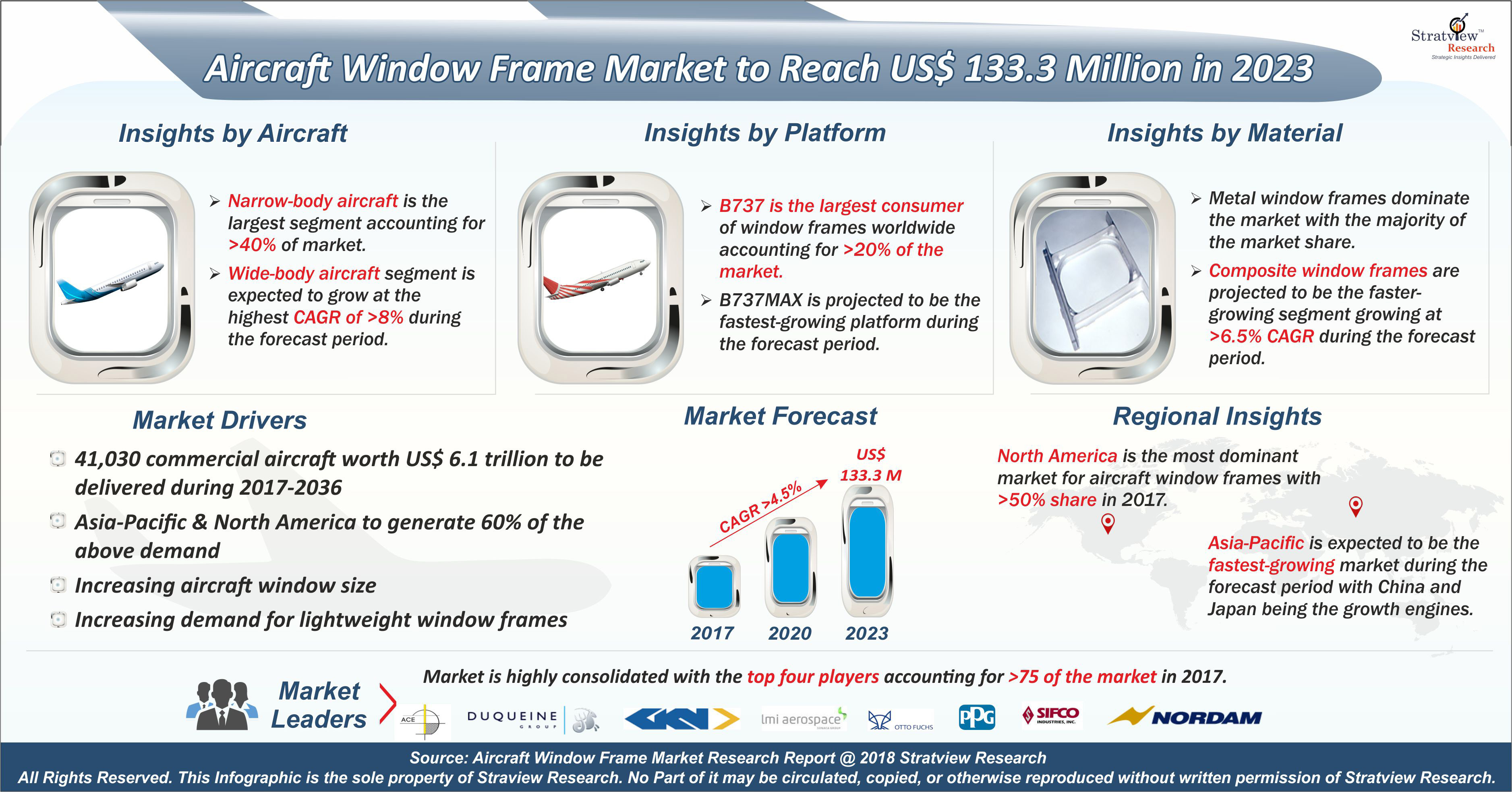The global aircraft window frame market is projected to grow at a healthy rate over the next five years to reach US$ 133.3 million in 2023. Increasing commercial and regional aircraft deliveries to support rising air passenger and freight traffic; increasing production rates of the next-generation aircraft programs, such as B787 and A350XWB; growing trend of larger windows; and high focus on the development of lightweight frames to achieve higher fuel efficiency and carbon emission reduction are the key drivers of the aircraft window frame market.
Frames are used in passenger cabin windows and cockpit windshields to provide rigidity to the windows. The metal window frame is the industry standard and is used in most of the aircraft frames. High demand for fuel-efficient aircraft led to the development of composites rich aircraft. Almost every component has undergone several changes in terms of design, material, etc. Window frames are also not untouched by such dynamics. Both the major commercial aircraft OEMs, Boeing and Airbus, have worked with material suppliers and parts fabricators and developed composite window frames for their next-generation aircraft, B787, and A350XWB. Composite window frames offer superior damage tolerance and have almost 50% lower weight compared to the tra

Our Clients